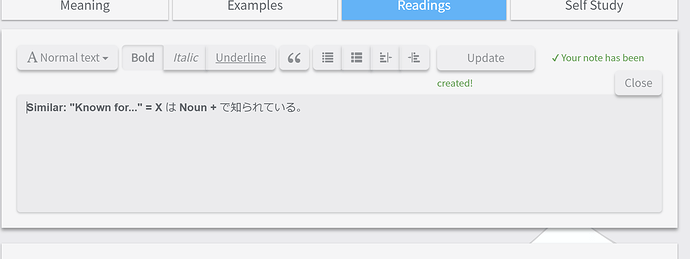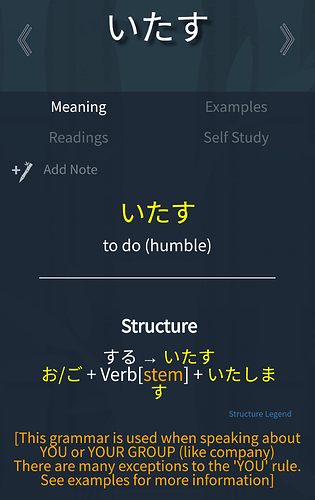Hi, I have a couple of quick suggestions.
-
When I’m doing lessons and get to the example page, I scroll down to the bottom to listen to them all but then I have to scroll back up to the top to get to the next item. Maybe you could have either the navigation for the next lesson item (<< | >>)or the navigation to go to the reading material (Meaning| Examples|Readings) for the item (or both) at the bottom of the page too. It’s not that big of a deal to scroll back up but it’s nice if I don’t have to.
-
This is a super picky thing that might not matter much but maybe others noticed it too. The links for “Study” goes to an HTML page called “/learn” but the link for “Review” goes to a page named “/study”. It’s just a tiny bit confusing.









